The contemporary educational landscape is marked by a critical debate: should school days be shorter? The article “6 Reasons Why School Days Should Be Shorter” ventures into this discussion, dissecting various dimensions of the length of school days and their impact on the educational ecosystem. This exploration is not just limited to the United States; it extends to a global perspective, offering a comparative analysis of school day lengths and their varying implications across different cultures and education systems.

The article methodically unpacks the intricacies of school day regulations within the U.S., illustrating the diversity and complexity of policies that govern educational time. It also delves into the advantages of shorter school days, considering how they could reshape learning experiences, boost academic performance, and enhance student well-being. These potential benefits are juxtaposed with the challenges and concerns that accompany the prospect of reducing school hours.
Shorter school days. Elementary should be 5 hours, 6-7 for middle, 8 for high school, rather than teaching 7 year olds that they’re misbehaving if they get too antsy while sitting in a chair for 8 hours
— astarion’s spoon ⏳ (@PurpleInsomnia_) November 17, 2023
From the logistical hurdles for schools and families to the implications for instructional quality, the article comprehensively examines the multifaceted impact of this significant shift in educational practice. By offering a balanced perspective, it aims to contribute thoughtfully to the ongoing dialogue on optimizing school day length for the betterment of students, educators, and the broader educational community.
What you’ll find on this page:
- Understanding the Diversity in School Day Regulations Across the U.S. →
- Comparative Analysis of School Day Lengths: A Global Perspective →
- Key Benefits of Shorter School Days →
- Evaluating the Challenges of Shorter School Days and Addressing Concerns →
- A Look at Successful Shorter School Day Models Around the World →
Understanding the Diversity in School Day Regulations Across the U.S.
The length of the school day in the United States is subject to state regulations, with the average K-12 public school session spanning approximately 180 days annually. This figure emerges from an analysis by the Pew Research Center, which examined data from the Education Commission of the States. However, the uniformity ends there, as the definition of a ‘school day’ and the total educational time varies significantly across different states.
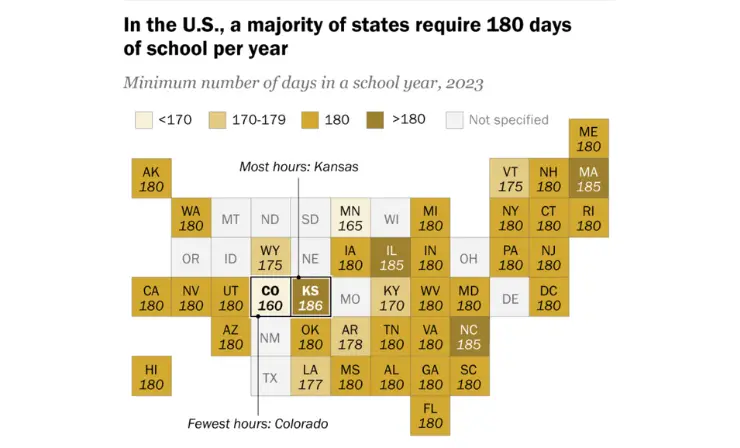
In the United States, the regulation of the school day length is characterized by significant diversity, with states adopting various criteria such as minimum days, hours, or minutes per school year. This variety reflects the unique educational needs and preferences of different regions:
- State Regulations on School Days: 39 states have laws or policies setting minimum school times. Notably, Oklahoma offers flexibility with options like 180 standard school days or 1,080 hours over 165 days.
- Variation by Grade Level: Among these states, 26 have varying annual time minimums based on grade level. For example, South Dakota requires 875 hours for fourth graders and 962.5 hours for eighth graders.
- Average Instructional Hours: There’s a significant range in instructional hours across states. On average, fourth graders receive about 997.8 hours annually, while 11th graders experience a wider range from 720 hours in Arizona to 1,260 hours in Texas, averaging 1,034.8 hours.
- Daily Time Requirements: Additionally, 29 states and the District of Columbia have specific daily hours or minutes requirements, often differing by grade. Pennsylvania’s daily minimum varies from 2.5 hours for kindergarten to 5.5 hours for high school students.
- Extremes in Daily Hours: The school day length for eighth graders can range from as little as 3 hours in Maryland and Missouri to as much as 6.5 hours in Tennessee. New Hampshire and Oregon even have maximum daily limits.
- Texas’s Unique Approach: Texas specifies a total of 75,600 minutes (1,260 hours) per school year, including breaks, allowing districts to decide how to allocate these minutes. Previously, Texas had a 7-hour school day, which equated to a 180-day school year.
This diverse array of regulations across the U.S. showcases the adaptability in meeting educational needs, balancing instructional requirements with practical considerations in various school environments. Each state’s approach is tailored to the specific needs and preferences of its districts, illustrating the varied landscape of educational time management in the country.
Comparative Analysis of School Day Lengths: A Global Perspective
The length of the school day in the United States, averaging around 7 hours and 30 minutes, reveals interesting contrasts when compared to school days in other countries. This comparison highlights the diverse educational practices and philosophies globally.

- In Asia, Taiwan and China exhibit significantly longer school days than the U.S., with Taiwan leading at 10 hours and China close behind at around 9 hours and 30 minutes. These extended hours reflect the intense academic focus prevalent in many Asian educational systems.
- European countries like France and Chile (although not in Europe but demonstrating a similar approach) have school days lasting about 8 hours, which is slightly longer than the U.S. This duration tends to balance academic instruction with other activities.
- The United Kingdom, with a 7-hour school day, is quite comparable to the U.S. However, Commonwealth countries such as Canada and Australia have slightly shorter school days, around 6 hours and 30 minutes and 6 hours and 15 minutes, respectively.
- Further contrast is seen in countries like Russia, Spain, Mexico, and Italy, where the school day spans approximately 6 hours, offering a more balanced approach between academic pursuits and other aspects of student life. Finland and Brazil, known for their progressive educational policies, have even shorter school days, averaging around 5 hours, focusing on efficiency and student well-being.
- Germany represents the shortest average school day at 4 hours and 30 minutes, indicating a different educational philosophy that may emphasize the quality of instruction over the number of hours spent in school.
These comparisons show that the U.S. falls in the middle range of school day lengths. Unlike the longer days seen in Asian countries, which focus heavily on academics, and shorter than those in countries like Germany, which prioritize concentrated and efficient learning, the U.S. school day reflects a balance of instructional time and other educational activities. This diversity in school day lengths across countries underscores varying educational approaches and priorities, shaped by cultural, social, and pedagogical factors unique to each nation.
Key Benefits of Shorter School Days
The concept of shorter school days is increasingly being recognized as beneficial for students, leading to happier, healthier, and more successful outcomes. This approach challenges the traditional belief that longer school hours are synonymous with better academic achievement. Let’s delve into the advantages of shorter school days and how they could be implemented.
Curious about how shorter school days might impact students? Recent studies suggest they could be beneficial. Explore the nuances of who these changes affect and what the ideal length for a school day might be by watching this informative video. It delves into the latest research and expert opinions, offering a comprehensive look at this important educational topic.
1. Boost in Academic Performance
Discover an intriguing approach to school timing that might just make mornings easier for parents of teenagers. Some English schools are experimenting with starting classes later in the day, allowing teens extra sleep in the morning. Graham Satchell visits one such school to explore this innovative trial. Watch his report to see the impact of this change and whether it could become a more widespread practice.
Surprisingly, shorter school days have been linked to improved academic performance. Research by the National Bureau of Economic Research reveals that students in schools with shorter days often score higher on standardized tests. This improvement is attributed to enhanced focus and more effective information retention, as shorter days reduce cognitive overload.
Research conducted by the National Bureau of Economic Research has shown that shorter school days can lead to improved academic performance. The study found that students attending schools with shorter days often scored higher on standardized tests than those in schools with longer days.
This improvement in academic performance is thought to result from students being able to focus better and retain information more effectively, as shorter school days help reduce cognitive overload. This research supports the idea that reducing the length of the school day could be beneficial for students academically.
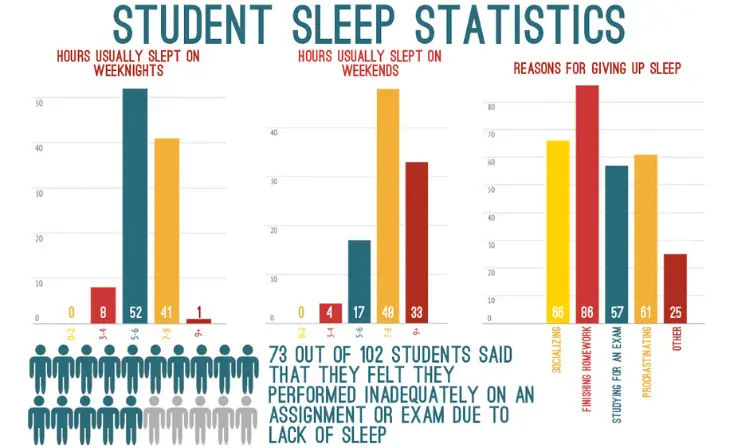
Why it’s important: Enhanced academic performance is crucial for students’ educational and career prospects. Shorter school days can lead to better focus and more effective information retention, reducing cognitive overload. Improved academic outcomes are essential for students’ self-esteem, future learning opportunities, and overall success in life.
2. Improved Mental Health and Well-being
Explore the inspiring journey of Hailey Hardcastle, a University of Oregon freshman and student mental health advocate, in this video. Learn about her influential work on passing House Bill 2191, allowing mental health days for students, and her efforts in promoting student advocacy and innovative solutions to teenage mental challenges.
Extended school hours can adversely affect students’ mental health, leading to fatigue, stress, and burnout. Shortening the school day can offer students much-needed downtime, fostering better mental health and increased motivation. This break from academic pressures is crucial for emotional and psychological well-being.
Research supports the idea that shorter school days can positively impact students’ mental health and well-being. For instance, a study by the RAND Corporation, as discussed in an article from The Daily Iowan, found that a four-day school week improved students’ sleep, resulting in them feeling less tired. This change also offered students a day of rest, contributing to better mental health outcomes.
The study highlighted that students with a four-day school week experienced benefits in both their learning experience and mental health, suggesting that reduced school hours can enhance overall student well-being. This research aligns with the notion that shorter school days can provide crucial downtime for students, reducing stress and improving their mental health.
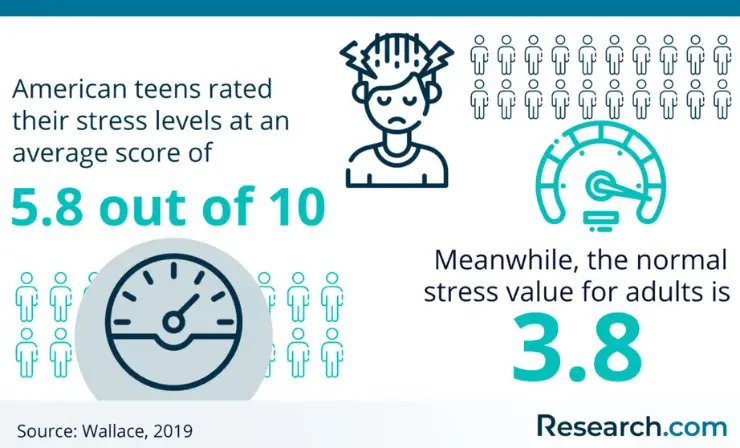
Why it’s important: Students’ mental health and well-being are vital for their overall development. Long school days can lead to fatigue, stress, and burnout, negatively impacting mental health. Shorter school days provide necessary downtime for relaxation and recharging, leading to improved mental health and increased motivation. This is crucial for students’ emotional resilience and ability to cope with academic pressures.
Dive into the compelling “8 Reasons Why Students Should Have Mental Health Days: A Research-Based Analysis” to understand the importance of mental health in academic settings. This article offers a thorough, evidence-based exploration of why mental health days are crucial for student well-being and academic success, making a strong case for their inclusion in educational policies.
3. Enrichment Through Extracurricular Activities
With more free time, students can engage in extracurricular activities that foster skills beyond the academic realm. Participation in sports, arts, and clubs contributes to holistic development, offering experiences that are invaluable for personal growth. Moreover, additional family time strengthens familial bonds and provides emotional support.
Discover the significance of extracurricular activities in this engaging video. It delves into why these activities are essential for personal and educational development, especially for young students. It is a great resource for parents, educators, and students alike to understand the value of these pursuits beyond the classroom.
Research has consistently shown that participation in extracurricular activities offers significant benefits for students, enhancing their social, emotional, and academic development. According to a publication by the Center for Responsive Schools, extracurricular activities instill values such as teamwork, responsibility, and a sense of community.
They are also proven to boost school attendance, academic success, and aspirations for continuing education beyond high school. Additionally, these activities lead to healthier lifestyle choices, such as avoiding drug use and maintaining a healthy body weight, thereby contributing to students’ overall emotional well-being and interpersonal skills (Center for Responsive Schools, 2020).
Watch Cori as she explains the crucial role of extracurricular activities in the college preparation process. This video offers valuable insights into how these activities enhance college applications and contribute to student development. A must-see for students planning their academic future.
Another study, as summarized on the European Commission website and conducted by RAND, emphasizes the role of extracurricular activities in fostering social inclusion, particularly for children from disadvantaged and vulnerable backgrounds. These activities, ranging from sports clubs to music and educational groups, enable children to become active citizens in their community and develop soft skills such as self-esteem and resilience.
The study highlights that although current research on the specific benefits of extracurricular activities is fragmented, there is a recognized potential for these activities to support social inclusion and offer diverse benefits to children participating in them (RAND Corporation, 2021).
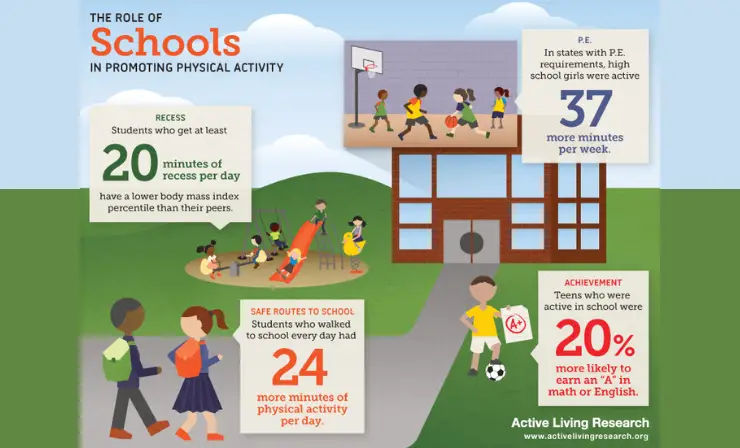
Why it’s important: Extracurricular activities play a significant role in holistic development. They foster skills beyond academics, such as teamwork, creativity, and leadership. More free time allows students to engage in these activities, contributing to their personal growth and development of valuable life skills. Participation in sports, arts, and clubs enriches students’ educational experiences and prepares them for diverse life situations.
4. Reduction in Stress and Burnout
The stress and exhaustion associated with long school days can lead to student burnout, affecting both motivation and academic performance. Shorter school days can alleviate this stress, promoting a healthier balance between academic responsibilities and personal life. This balance is key to maintaining enthusiasm for learning and overall student well-being.
Check out this insightful video where Carley shares her experience with school-related stress, offering a unique perspective that compares her situation to someone who longs for educational opportunities. This video sheds light on the real issue of stress levels among students and prompts viewers to think differently about the pressures of academic life.
Research on the impact of shorter school days on student stress and burnout suggests that reducing the length of the school week can have positive effects on students’ well-being. A study conducted on the four-day school week in Colorado found a generally positive relationship between the four-day school week and academic achievement, which indirectly points to reduced stress and burnout.
The study indicated that the schedule change could lead to better attendance and potentially more focused instruction time, contributing to improved performance and reduced stress for students (Education Finance and Policy, MIT Press).
Uncover surprising insights in ‘7 Research-Based Reasons Why Students Should Not Have Homework: Academic Insights, Opposing Perspectives & Alternatives‘. This article provides a thought-provoking analysis of homework’s impact on students, offering evidence-based arguments and exploring alternative educational strategies for effective learning.
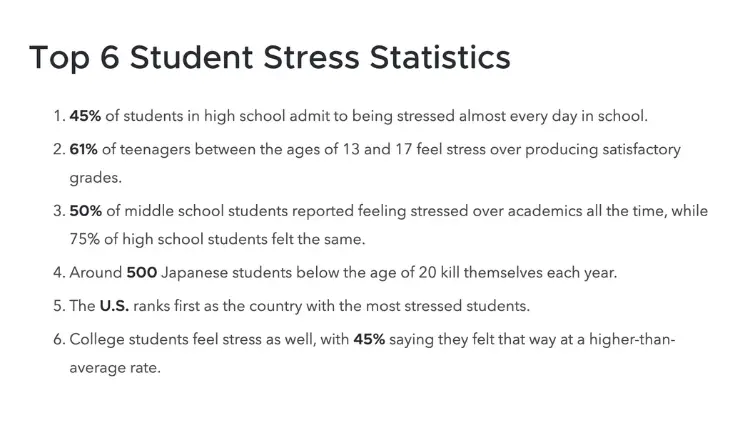
Why it’s important: Reducing stress and burnout is essential for maintaining students’ enthusiasm for learning and overall well-being. The pressure and exhaustion from long school days can lead to decreased motivation and academic performance. Shorter school days can help establish a healthier work-life balance for students, enhancing their productivity and engagement in both academic and personal endeavors.
5. Enhanced Teacher Well-being and Performance
Shorter school days not only benefit students but also provide vital rest and rejuvenation for teachers. In contrast to the brief periods in college or university, school teaching can be more demanding. Allowing teachers adequate rest time, even within a shorter school timeframe, keeps them energized and prepared for effective teaching.
A well-rested teacher can plan engaging and fun activities, enhancing student engagement and learning experiences. This approach aligns with broader educational research that underscores the importance of teacher well-being as a critical factor in delivering quality education and fostering a positive learning environment.
I recommend watching this insightful video that delves into the reasons behind teachers’ fatigue and the benefits of shorter school days. It highlights how demanding the current educational system can be for educators, leading to a state of exhaustion. Interestingly, the video also presents the idea that shorter school days could be a game-changer, offering teachers more time to unwind and reducing their workload. This approach could significantly improve the well-being and effectiveness of educators.
Research by RAND Corporation has explored the effects of shorter school weeks, particularly the four-day school week, on both students and teachers. It was found that teachers reported feeling less burned out and missed fewer instructional days due to illness or exhaustion with the shorter week. This schedule change also allowed them more time to prepare for the upcoming week and to engage in personal activities.
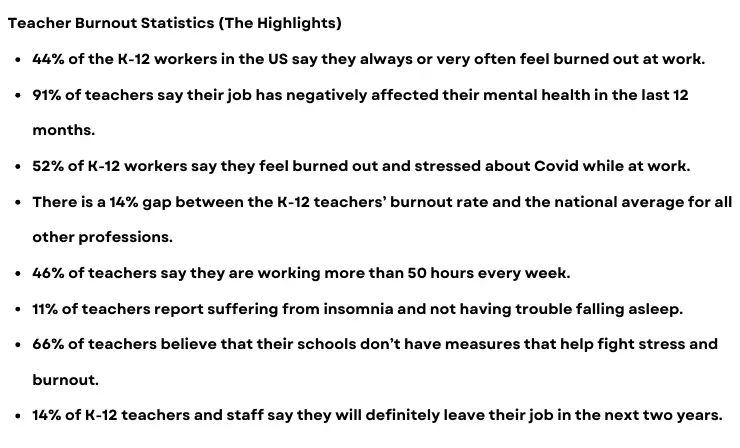
Why it’s important: Addressing teacher burnout and stress is crucial for maintaining a high-quality education system. The RAND Corporation’s study on the four-day school week highlights that reduced working hours can significantly improve teachers’ well-being and job satisfaction. This is important because teachers’ mental health directly affects their ability to engage with students, plan effective lessons, and create a positive learning environment. By improving teacher well-being, schools can enhance the overall educational experience for students.
6. Effective Homework Management in Shorter School Days
Long school days combined with a plethora of extracurricular activities can lead to students tackling their homework late into the night. Adopting shorter school days, however, could provide a solution. This change allows students to partake in additional activities while ensuring they have enough time for homework, thereby balancing their academic and personal lives.
This informative video examines the impact of excessive homework on teen stress levels, highlighting how shorter school days not only reduce stress but also provide more time for homework completion. It’s a concise yet insightful exploration of the balance between academic demands and student well-being.
Research on the implications of shorter school days points to positive outcomes in homework management. For example, a study on the four-day school week in Colorado found a positive association with academic performance, indirectly suggesting a reduction in homework-related stress. The study indicated that a condensed school week could result in better attendance and more efficient classroom time, leading to improved performance and less pressure for students to complete homework late at night (Education Finance and Policy, MIT Press).
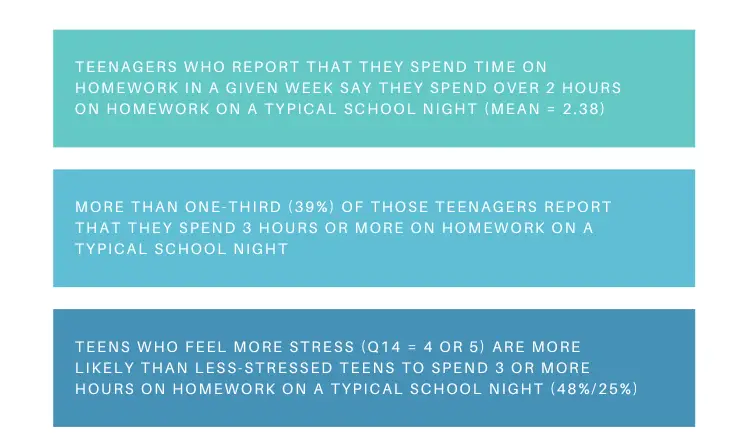
Why it’s important: Ensuring students have adequate time for homework without the burden of overly long school days is essential for their well-being and academic success. Shorter school days can help establish a healthier balance, enhancing students’ ability to manage their academic responsibilities effectively and maintain their enthusiasm for learning.
In practice, implementing shorter school days would require a reevaluation of current educational models, focusing on quality over quantity in terms of instructional time. This approach encourages efficiency in teaching methods and prioritizes student health and personal development as integral components of educational success. The move towards shorter school days represents a progressive step in adapting education systems to better meet the needs of today’s students.
Evaluating the Challenges of Shorter School Days and Addressing Concerns
Addressing the concerns around the concept of shorter school days, there are several reasons why school days should not be shorter that are often brought up.
1. Impact on Working Parents
Shorter school days can disrupt the schedules of working parents, who often rely on traditional school hours for consistent childcare. This shift could necessitate alternative childcare arrangements, leading to increased stress and financial strain due to the costs of additional childcare or after-school programs.

In the United States, the shift to four-day school weeks in some districts has significantly affected working parents. Parents, especially mothers, have faced challenges in adjusting their work schedules and finding affordable childcare for the additional day off. This change has sometimes resulted in decreased labor income for mothers due to the need to provide childcare or arrange for additional care.
Counterargument: Flexibility and Quality Time for Families In response to this challenge, shorter school days can actually offer more flexible and quality time with children. Communities can adapt by providing enriched after-school programs, potentially reducing the financial burden on individual families. These programs can offer valuable learning experiences outside the traditional classroom setting, being a collaborative effort between schools, local businesses, and community organizations.
2. Costs and Logistics for Schools
Implementing shorter school days may lead to increased financial demands on schools, such as the need for extra staff for supervision or changes in transportation schedules. These logistical adjustments could result in significant additional expenses for schools.

Schools transitioning to shorter school days often incur additional expenses related to staffing and transportation. For example, schools may need to hire more staff to supervise students during after-school programs or adjust their transportation schedules to accommodate the new school hours, leading to increased operational costs.
Counterargument: Long-term Financial Benefits for Schools Despite the initial costs, shorter school days can lead to decreased operational costs, such as utilities and maintenance expenses, thereby offering long-term financial benefits. Additionally, a more focused and efficient school day can lead to better allocation of resources towards enhancing educational quality.
3. Possible Reduction in Instructional Time
There is a concern that shorter school days might lead to a decrease in the amount of instructional time available, potentially affecting the quality of education and the ability to meet curriculum standards.

Concerns about a reduction in instructional time with shorter school days are evident in various education systems. For instance, some schools have had to restructure their curriculums and teaching methods to ensure that essential learning outcomes are still achieved within the shortened school day. This challenge requires innovative approaches to maintain the quality of education.
Counterargument: Enhanced Learning Quality Contrary to this concern, a reduction in instructional time does not necessarily equate to a decrease in learning quality. Shorter school days can lead to more focused and engaged learning sessions, where quality of instruction is more impactful than quantity. Innovative teaching methods and technologies can ensure curriculum standards are met efficiently within a shorter timeframe, potentially improving learning outcomes and student well-being.
In conclusion, while transitioning to shorter school days presents certain challenges, these can be effectively addressed through community collaboration, innovative educational strategies, and a focus on the quality rather than the quantity of schooling. This approach can lead to a more balanced, effective, and enriching education system.
A Look at Successful Shorter School Day Models Around the World
As the debate around the length of the school day continues, it’s essential to look at successful models worldwide to understand the potential benefits of shorter school days. This part of the article “4 Reasons Why School Days Should Be Shorter” examines various international models where shorter school days have been implemented effectively.
The Finnish Model
Finland’s education system stands out for its shorter school days and a strong emphasis on quality education. Finnish students start school at age seven and have school days lasting only about 4-5 hours. Despite this, they rank highly in international assessments like PISA (Program for International Student Assessment). This success is attributed to a curriculum that focuses on student well-being, less homework, and minimal standardized testing, fostering an environment conducive to learning and creativity.
Renowned for its focus on student well-being and less formal structure, Finnish teachers often emphasize the importance of play and individualized attention. They have the autonomy to adjust their teaching methods to suit the needs of each student, which is a key factor in the high performance of Finnish students in international assessments.
Explore how Finland has managed to consistently outperform in education on a global scale. This video delves into the success of Finnish schools, offering insights that could inspire improvements in educational systems worldwide.
The French Model
In France, the school day typically lasts for 6 hours with a substantial two-hour lunch break. French schools also adopt a four-day school week, which has shown success in reducing student stress and improving academic performance. This model balances academic work with ample time for relaxation, socializing, and physical activity.
French educators often highlight the benefits of this model in promoting a balanced approach to education, where students have ample time for socializing, physical activities, and relaxation, contributing to their overall well-being and academic performance.
Discover how France is revolutionizing its educational system in this fascinating video titled “French Education: Reinventing the Idea of School.” Delve into the innovative changes and approaches being adopted in French schools that are transforming the traditional concepts of learning and teaching.
The UAE Model
The United Arab Emirates has been considering shorter school weeks, partly inspired by Finland’s approach. The goal is to focus on quality education without unnecessarily extending school hours. This approach aims to prevent student anxiety and overload, acknowledging the importance of a balanced education that includes time for relaxation and extracurricular activities.
Educators in the UAE focus on the quality of education and the holistic development of students, aiming to reduce stress and anxiety while providing a well-rounded educational experience.
Watch this engaging video to understand how the UAE is placing a strong emphasis on educational reform. It highlights the nation’s commitment to improving its education sector, a vital component of its broader development goals. This video offers insights into the strategic efforts and initiatives underway in the UAE to enhance its educational landscape.
The Japanese Model
The Japanese school model is unique, particularly in its approach to the length of the school day. Typically, a school day in Japan runs from 8:30 am to around 3:00 pm, but this can vary. Some schools have shorter days, especially for younger students. The school day generally includes various classes, lunchtime, and cleaning time, where students participate in cleaning their school environment. This model emphasizes not only academic learning but also life skills and community involvement.
Japanese educators often point to the benefits of their shorter school day model in fostering a more engaging and varied learning experience. This approach allows students more time for extracurricular activities and personal interests, leading to improved attendance rates and lower dropout rates.
Discover the fascinating differences between Japanese and American schools in this eye-opening video. It’s a great opportunity to learn about the unique educational system in Japan and how it contrasts with the schooling experience in the United States.
These international examples demonstrate that shorter school days can lead to more focused learning, better student well-being, and overall academic success. They highlight the importance of balancing academic rigor with students’ holistic development and suggest that shorter school days could be a beneficial approach in various educational contexts.
Useful Resources
- When do kids start sitting still?
- Learning in Motion: Bring Movement Back to the Classroom
- 21 Engaging After-School Activities for Kids & Teens at Home
Final Thoughts
In “Why School Days Should Be Shorter: A Detailed Analysis,” we’ve explored the diverse approaches to school day lengths across the U.S., examined global perspectives, weighed the benefits, and addressed challenges. This comprehensive analysis, including a look at successful models worldwide, underscores the complexity and potential advantages of shorter school days. It highlights that while there are challenges to be navigated, the benefits, ranging from improved academic performance to enhanced student well-being, make a compelling case for considering shorter school days as a viable option in our evolving educational landscape.
Delve into the intriguing “Why Students Should Not Wear Uniforms: A Thoughtful Exploration with 9 Reasons, Studies, and Statistics” for a comprehensive understanding of the debate surrounding school uniforms. This article presents a nuanced analysis, backed by research and data, exploring the various reasons and implications of a no-uniform policy in schools.
References
- 50-State Comparison: Instructional Time Policies
- Minimum number of instructional days and hours in the school year
- Finance and Children’s Academic Performance
- Opinion | Four-day school week would improve mental health for students
- 50 Current Student Stress Statistics: 2024 Data, Analysis & Predictions
- Important Benefits of Extracurricular Activities
- Benefits of Extracurricular Activities for Children
- 50 Shocking Facts: High School Grads Entering College – 2024
- Does Shortening the School Week Impact Student Performance? Evidence from the Four-Day School Week
- 47 Student Stress Statistics (High School/College)
- The Four-Day School Week: Are the Pros Worth the Cons?
- 20 Teacher Burnout Statistics That Prove The Crisis 2024
- TEENS AND SLEEP
- Finnish education system
- The French education system
- Why UAE schools may consider Finland’s shorter day model when the weekend changes
- Education in Japan: The View from the Classroom
- Overview of 22 Low-Code Agencies for MVP, Web, or Mobile App Development - October 23, 2024
- Tips to Inspire Your Young Child to Pursue a Career in Nursing - July 24, 2024
- How Parents Can Advocate for Their Children’s Journey into Forensic Nursing - July 24, 2024
